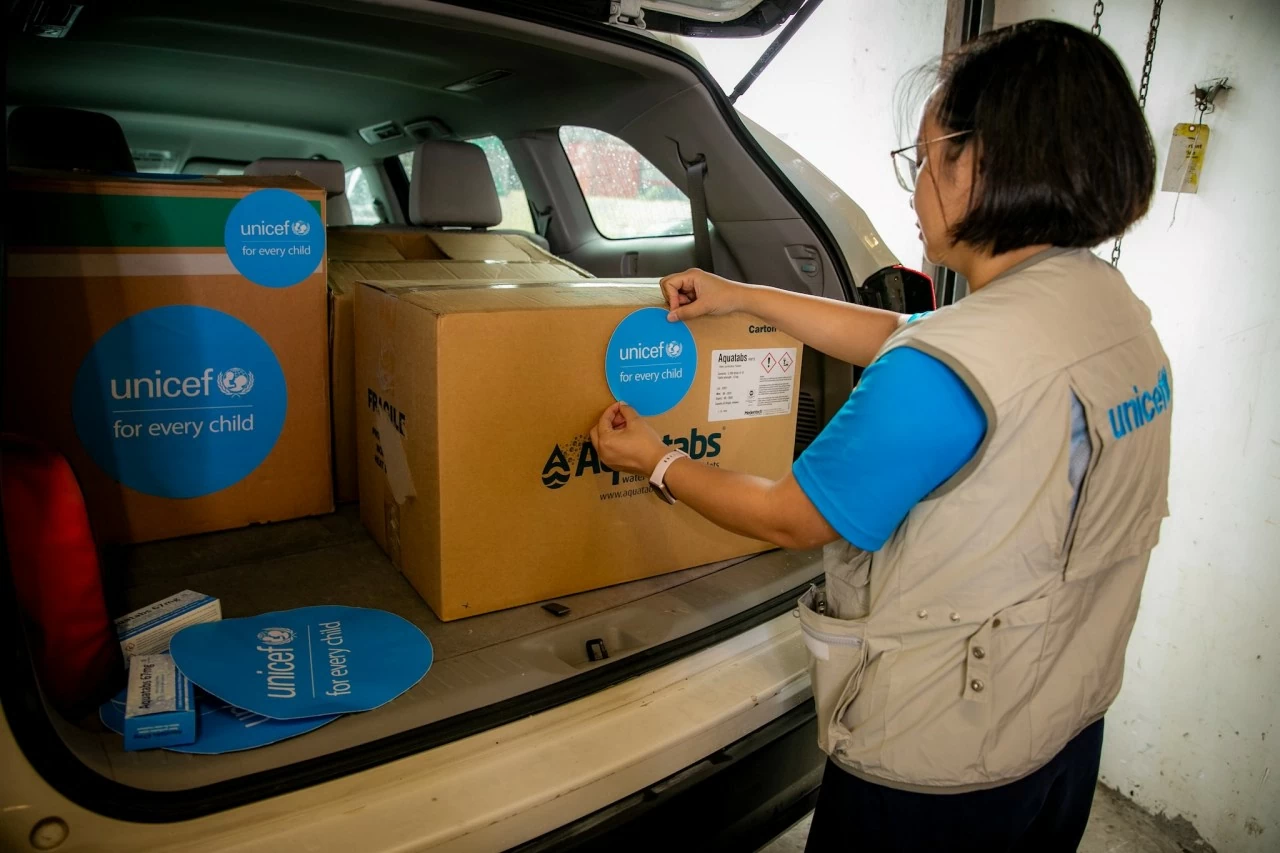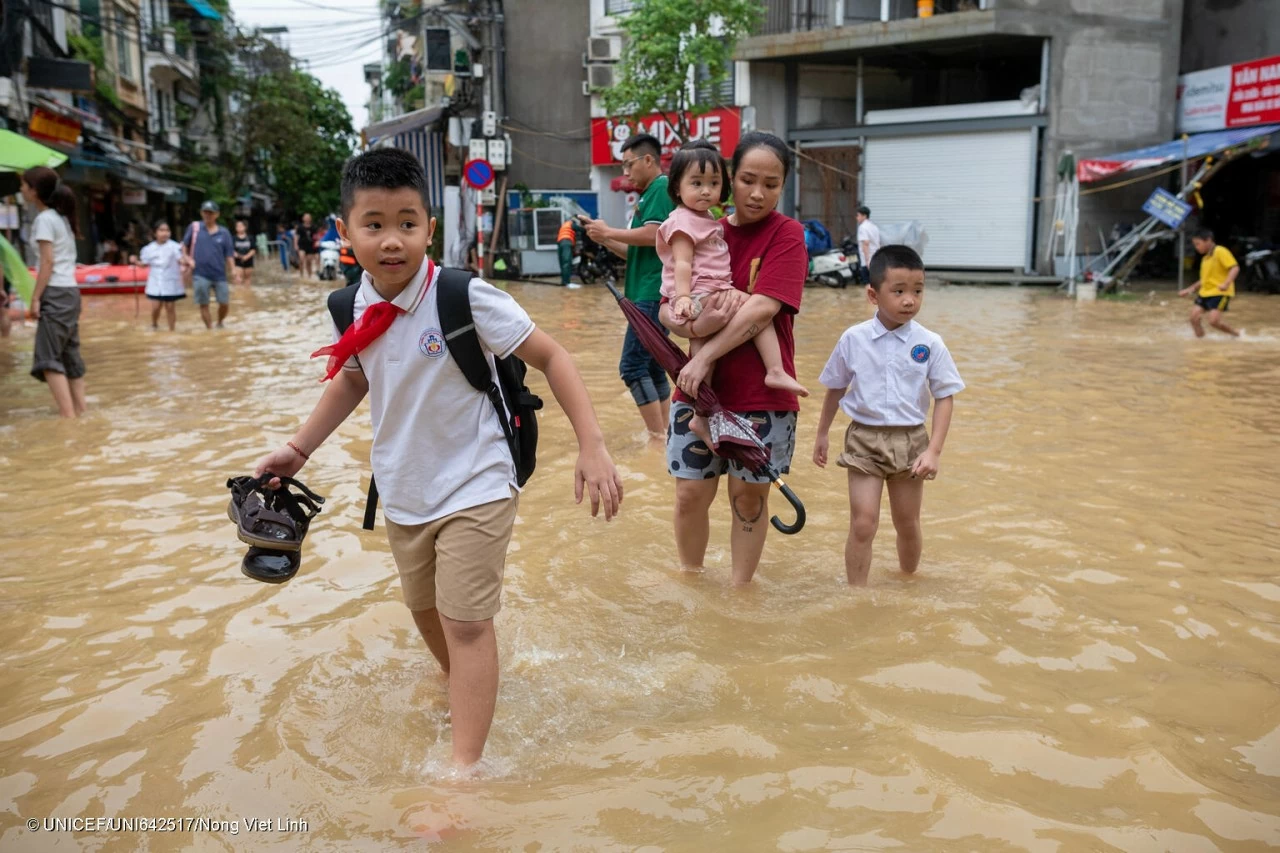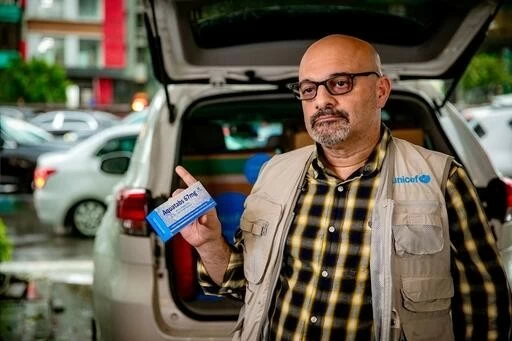
UNICEF delivers immediate relief to communities affected by Typhoon Yagi in Northern Vietnam
Latest
 |
| UNICEF WASH Officer Nguyen Hong Hanh receiving water purification tablets provided by UNICEF to government partners for distribution to communities affected by Typhoon Yagi. (Photo: UNICEF) |
UNICEF has provided water supplies to government partners for distribution to households, hospitals, health facilities and schools in three provinces which are among those most affected by Super Typhoon Yagi. The typhoon was the strongest to hit Vietnam in decades, sweeping through the country on 7 September and resulting in severe storm damages, widespread flooding, landslides and flashfloods.
In support of the Government of Vietnam’s response, UNICEF has urgently dispatched 80,000 water purification tablets for the Centre of Disease Control in Thai Nguyen province, and 4,000 liters of water to Lao Cai Provincial Hospital to ensure drinking water supply for 800 people. In the coming days, UNICEF will deliver water purification tablets, water tanks, ceramic filters, hand sanitizers, and soap to government partners to be distributed to households, schools and healthcare facilities in Yen Bai and Lao Cai Provinces.
"UNICEF is committed to urgently providing sustained support to the Government of Vietnam to ensure children and families have access to essential services," said Silvia Danailov, UNICEF’s Representative in Vietnam.
“We have already started to deliver life-saving support and are mobilizing resources to address the massive needs. Too many children have had their access to essential services like clean water, sanitation, healthcare, and education cut off, and swift action to restore these lifelines is urgently needed. The devastation caused by the typhoon is a tragic reminder of the disproportionate impact extreme weather events, intensified by climate change, have on children.”
Nearly 19 million people, including 5.5 million children, live in the hardest-hit provinces, including Lao Cai, Tuyen Quang, Cao Bang, Yen Bai, Quang Ninh, Hai Phong, Ha Noi, Thai Binh, Hai Duong, Hoa Binh, Thai Nguyen, and Phu Tho provinces. Typhoon Yagi ravaged 26 northern provinces, leaving 324 people dead or missing, including 24 children. It has damaged an estimated 141,469 homes, 550 health facilities, and 805 schools, while around 400,000 homes lack access to safe water. Approximately two million children have been left without access to education, psychosocial support, and school feeding programmes. |
National authorities have issued a warning for continued heavy rain, with flash floods and landslides still devastating villages and communities in the northern provinces of the country which are home to a large number of vulnerable communities, including ethnic minorities.
UNICEF is mobilizing resources to ensure emergency aid is urgently provided. An initial USD 11 million is urgently required to be able to deliver on its mandate to assist the most vulnerable children. As the full impact of the typhoon unfolds, additional resources will be critical to meeting the urgent needs of children and families in the affected regions.
UNICEF works in some of the world's toughest places, to reach the world's most disadvantaged children. Across more than 190 countries and territories, we work for every child, everywhere, to build a better world for everyone.
In support of the Government of Vietnam’s decisive and commendable actions to address the impact of the disaster, UNICEF’s priority interventions include: • Providing water treatment, sanitation supplies, and safe storage solutions to households, health facilities and schools. • Delivering emergency medical supplies, including vaccines, malnutrition treatment, nutrition supplements, and hygiene kits to health centers in the most affected areas. • Supporting the reopening of schools by providing temporary learning spaces and educational materials and extending psychosocial support to children affected by the trauma of the disaster. • Providing emergency kits with essential items – including psychosocial support materials, educational tools, hygiene supplies, and basic health care products – to children and families in the most affected areas. • Providing payments of humanitarian cash assistance to the most vulnerable households with children and pregnant women, allowing them to meet urgent needs and recover more quickly from the disaster. |



















